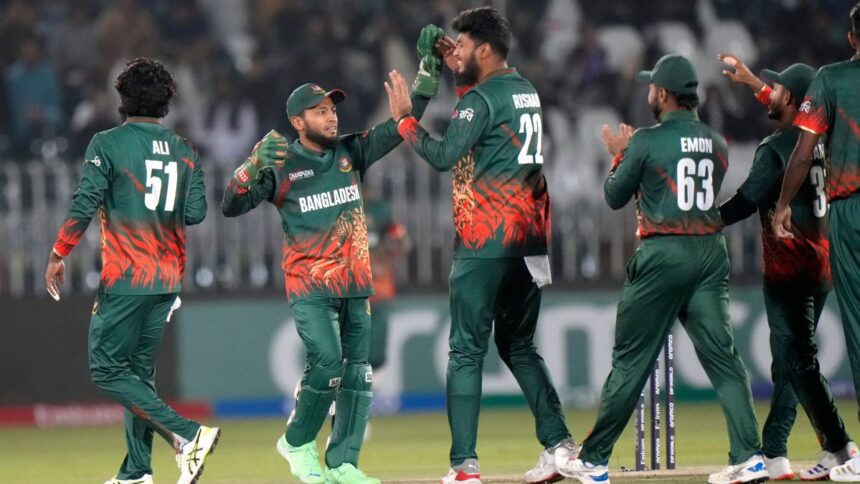Bangladesh’s Disappointment in ICC Champions Trophy: A Deep Dive
The ICC Champions Trophy has always been a significant event in the cricketing calendar, showcasing talent from around the globe. However, Bangladesh’s recent performance has raised eyebrows and sparked discourse among fans and analysts alike. After being knocked out of the tournament on February 24 by New Zealand, many are left questioning the team’s strategy, performance, and the roles of senior players.
Bangladesh’s Key Matches: A Quick Recap
Bangladesh entered the ICC Champions Trophy with high hopes but fell short in their opening matches. They faced off against India and New Zealand, managing to post totals of only 228 and 236 runs, respectively. These scores proved to be inadequate, as both opposition teams chased down these totals with relative ease. The batting unit, considered the backbone of the team, displayed a lack of form and coherence, which ultimately cost them their place in the tournament.
Criticism from Former Cricketers
One of the more vocal critics of the Bangladesh team has been former Indian cricketer Wasim Jaffer. Jaffer’s analysis highlights the disappointing performance of senior players such as Mushfiqur Rahim and Mahmudullah. He pointed out that senior players have historically been expected to anchor the innings and guide younger teammates, but this has not been the case recently. According to Jaffer, notable performances from seniors have been scarce, with Shakib Al Hasan being a notable exception during the 2019 ICC World Cup.
Jaffer expressed his disappointment, stating: "I don’t know if it’s the pressure that gets to them or they put too much pressure on themselves, they just don’t turn up." His critique focused not only on the lack of runs but also on poor shot selection, especially in high-pressure situations. Rahim and Mahmudullah’s decision-making during critical moments complicated Bangladesh’s efforts, leading to a premature exit from the tournament.
Strategic Failures and Limitations
The measurable failings in terms of runs were matched by the overall strategic shortcomings within the team. Bangladesh had the potential to score 300-plus on the pitches they played on, yet they failed to capitalize on it. The blunders in the batting unit meant that the bowling attack—despite performing adequately—was always under pressure. As Jaffer pointed out, expecting bowlers to defend scores below 240 against quality teams like New Zealand is a tall order.
A significant observation was the reliance on a few key players instead of fostering a strong team dynamic where even the younger talents could thrive. As a cricketing nation, Bangladesh has seen growth in their cricketing capabilities, but this growth has stagnated in pressure situations, especially against more experienced teams.
Looking Forward: What’s Next for Bangladesh?
The defeat in the ICC Champions Trophy serves as a wake-up call for Bangladesh cricket. Moving forward, the focus should be on nurturing young talents while also ensuring senior players find ways to perform under pressure. Prioritizing both technical skills and mental resilience through training sessions, workshops, and match simulations could be a way to improve.
Moreover, understanding the psychological aspects of the game cannot be understated. Players and coaching staff alike should seek to create an environment that fosters confidence, creativity, and composure in high-stakes situations.
Conclusion
Bangladesh’s exit from the ICC Champions Trophy sheds light on the pressing need for a systematic overhaul in their approach to major tournaments. Their esteemed place in international cricket is underpinned by the contributions of both seasoned and emergent players; hence, ensuring that each individual—regardless of experience—can rise to the occasion is crucial. As fans look ahead, the hope is that the lessons learned from this tournament will fuel a new determination and strategy for success in the future.









